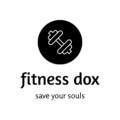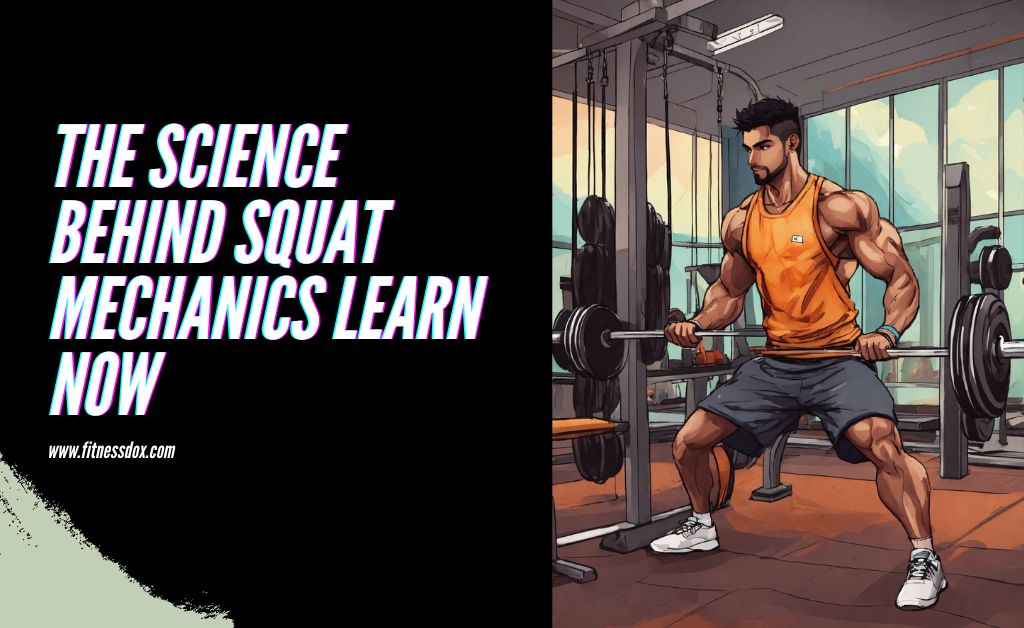The squat. It’s a fundamental exercise revered in the fitness world for its ability to sculpt strong legs, a powerful core, and a sculpted backside. But mastering the squat goes beyond simply loading a barbell and lowering yourself down. It’s about understanding the intricate dance of muscles, joints, and leverage – the science of squat mechanics.
By understanding the mechanics behind a perfect squat, you unlock a world of benefits:
- Injury Prevention: Proper form minimizes stress on your joints, especially your knees and lower back.
- Maximized Results: Perfecting your squat mechanics ensures you target the right muscles for optimal growth and strength gains.
- Improved Performance: Whether you’re a weightlifter, athlete, or everyday gym-goer, good squat mechanics translate to better power and stability in other exercises.
Let’s delve into the fascinating world of squat mechanics and equip you with the knowledge to perform squats like a pro!
Unveiling the Squat’s Anatomy
The squat is a multi-joint exercise that engages a symphony of muscles. Here are the key players:
- Quadriceps (Quads): The powerhouse muscles on the front of your thighs, responsible for knee extension and driving you upwards during the squat.
- Hamstrings: Located on the back of your thighs, the hamstrings work alongside your glutes to extend your hips and pull you back down to a standing position.
- Glutes: These powerhouse muscles on your backside are crucial for hip extension and generating power during the squat.
- Core: Encompassing your abdominal and lower back muscles, the core provides stability and maintains a neutral spine throughout the movement.
Understanding the function of each muscle group is the first step to mastering squat mechanics. As you squat, your quads initiate the descent, your glutes and hamstrings work together to control the lowering movement, and finally, your quads fire again to propel you back up to standing position. Your core acts as a central hub, keeping your torso upright and preventing unwanted twisting or arching.
Visualizing Squat Anatomy:
Imagine a diagram of the human body with the highlighted muscles mentioned above. Use arrows to demonstrate the action of each muscle group during the squat – quads pulling the knees up, hamstrings and glutes pushing the hips back, and the core maintaining a strong, neutral position.

The Science of Squat Mechanics: A Breakdown
Now that we’ve met the squat’s key players, let’s delve into the nitty-gritty of proper mechanics:
- Foot Position: Your Foundation for Stability
Your foot placement is the foundation for a safe and effective squat. Here’s what you need to know:
- Stance Width: A shoulder-width stance is generally recommended for most individuals. However, your ideal stance may vary depending on your anatomy and goals. A wider stance (wider than shoulder-width) can target your glutes more, while a narrower stance (slightly narrower than shoulder-width) can emphasize your quads.
- Toe Angle: Point your toes slightly outwards (around 15-30 degrees) to allow for natural hip and knee alignment. Straight-ahead toes are acceptable for some individuals, but avoid turning your toes inwards, which can put undue stress on your knees.
- Knee Tracking: Keeping It In Line
Proper knee tracking is crucial for preventing injury. Here’s the golden rule:
- Knees Track Over Your Toes: Imagine your toes as railroad tracks, and your knees should travel along these tracks throughout the squat. Avoid letting your knees cave inwards (valgus) or track outwards (varus).
- The Hip Hinge: Mastering the Squat’s Powerhouse
The hip hinge is the fundamental movement pattern of the squat. Here’s how to unlock its power:
- Think “Hinge,” Not Squat: Instead of simply bending down at the knees, imagine pushing your hips back and down as if you’re about to sit in a chair. This “hinging” motion keeps your back neutral and engages your glutes and hamstrings effectively.
- Core Engagement: The Unsung Hero
Your core is the silent partner in your squat success. Here’s how to engage it properly:
- Brace Your Core: Before initiating the squat, take a deep breath and brace your core as if you’re about to be punched in the stomach. This creates intra-abdominal pressure, stabilizing your spine and protecting your lower back.
Putting it All Together: Mastering the Perfect Squat
Now that you understand the key elements of squat mechanics, let’s put it all together:
- Stand Tall: Stand with your feet shoulder-width apart (or your preferred stance) and toes pointed slightly outwards. Maintain a tall posture with your shoulders back
- Engage Your Core: Take a deep breath and brace your core as discussed earlier.
- Initiate the Descent: Push your hips back and down as if sitting in a chair, keeping your back neutral and chest up. Simultaneously, bend your knees, maintaining proper knee tracking over your toes.
- Depth is Key: Descend until your thighs are at least parallel to the ground (a deep squat). If you have limitations in ankle mobility, you may not be able to reach full depth. Don’t force it – prioritize proper form over depth.
- The Ascent: Drive through your heels and fire your quads to push yourself back up to a standing position. Maintain a controlled ascent, avoiding any jerky movements.
Repeat: Breathe out as you complete the rep and repeat for your desired number of repetitions.
Common Squat Mistakes to Avoid:
- Rounding Your Back: This puts excessive stress on your spine and can lead to injury. Maintain a neutral spine throughout the squat.
- Letting Your Knees Cave Inward: This is a recipe for knee pain. Focus on keeping your knees tracking over your toes.
- Squatting Too Shallow: Don’t cheat yourself out of the full benefits. Reach a depth where your thighs are at least parallel to the ground (unless limitations prevent you).
- Using Excessive Weight: Focus on proper form before adding weight. Start with bodyweight squats and gradually progress the weight as you master the mechanics.

Visualizing the Perfect Squat:
Include an infographic or a short animation demonstrating the proper squat form with highlighted key points like:
- Neutral spine with straight back and shoulders back.
- Proper foot placement and toe angle.
- Knee tracking over toes throughout the movement.
- Hip hinge motion with hips pushed back and down.
Benefits of Mastering Squat Mechanics
Mastering squat mechanics unlocks a treasure chest of benefits:
- Injury Prevention: Proper form minimizes stress on your joints, especially your knees and lower back, significantly reducing the risk of injury.
- Maximized Muscle Activation: By focusing on proper mechanics, you ensure you’re targeting the right muscles for optimal growth and strength gains.
- Improved Performance: Whether you’re a weightlifter, athlete, or everyday gym-goer, good squat mechanics translate to better power, stability, and mobility in other exercises like jumps, deadlifts, and lunges.
- Stronger Core: Squats engage your core muscles isometrically, leading to a stronger and more stable core, which benefits your overall posture and athletic performance.
- Increased Bone Density: Squats are a weight-bearing exercise that helps stimulate bone growth, increasing bone density and reducing the risk of osteoporosis.
- Enhanced Functional Movement: Squatting is a fundamental human movement pattern, and mastering proper mechanics translates to better everyday activities like sitting down, climbing stairs, and picking things up.
Taking Your Squats to the Next Level: Variations and Considerations
Now that you’ve mastered the basic squat, you can explore variations to target specific muscle groups or challenge yourself:
- Front Squats: Hold the barbell across your shoulders in front of your body. This variation puts more emphasis on your quads and core stability.
- Goblet Squats: Hold a dumbbell or kettlebell at chest level. This is a great option for beginners or those with limited shoulder mobility.
- Bulgarian Split Squats: Stand with one leg behind you on a bench or step. This unilateral exercise challenges your balance and core stability while working each leg independently.
- Pistol Squats: One-legged squats, the ultimate test of balance and leg strength. Once you master bodyweight pistol squats, you can progress to weighted variations.
Important Considerations:
- Listen to Your Body: Don’t push yourself through pain. If you experience discomfort, stop the exercise and consult a doctor or physical therapist.
- Warm-Up Properly: Dynamic stretches like leg swings and high knees prepare your muscles for the squat movement.
- Cool Down and Stretch: After your squat workout, perform static stretches to improve flexibility and prevent muscle soreness.
- Progressive Overload: To keep challenging your muscles and see continued progress, gradually increase the weight, sets, or reps over time.
- Seek Guidance: Consider working with a qualified personal trainer who can assess your form and provide personalized guidance.
Debunking Squat Myths
There are several myths surrounding squats, which can deter people from incorporating this beneficial exercise into their routine. Let’s address some of the most common ones:
- Myth: Squats will make your legs bulky.
- Fact: Squats are more likely to sculpt and tone your legs, leading to a strong and defined appearance.

- Myth: Squats hurt your knees.
- Fact: Squats, when performed with proper mechanics, are actually beneficial for your knees. They strengthen the muscles surrounding your knee joint, improving stability and reducing the risk of injury.
- Myth: You need a lot of weight to get results from squats.
- Fact: Bodyweight squats are a fantastic way to build strength and improve your squat mechanics. Once you’ve mastered the bodyweight squat, you can gradually add weight for further challenge.
Conclusion: Embrace the Power of the Squat
The squat is a king among exercises for a reason. By understanding the science behind squat mechanics, you can unlock its full potential. Focus on proper form, engage your core, and don’t be afraid to experiment with variations as you progress. Remember, consistency is key! Make squats a regular part of your workout routine, and witness the positive impact on your strength, physique, and overall fitness.
Call to Action:
Ready to take your squat game to the next level? Share your squat journey with us on social media using #SquatMaster! Don’t hesitate to leave a comment below if you have any questions about squat mechanics or variations.

Pilates Bar – WeluvFit Pilates Bar Kit with Resistance Bands, Pilates Bar with Non-Slip Foot Strap/Anti-Break /3-Section/Exercise Equipment for Ballet, Home Workouts, Squat, Yoga for Full Body
Bonus Section:
Sample Squat Workout Routine:
This is a sample workout routine incorporating squats at different intensities. Adjust the weight, sets, and reps based on your fitness level:
- Warm-up (5 minutes): Light cardio like jumping jacks, followed by dynamic stretches.
- Bodyweight Squats (3 sets of 12-15 reps): Focus on proper form and full range of motion.
- Goblet Squats (3 sets of 10-12 reps) with a challenging weight.
- Bulgarian Split Squats (3 sets of 8-10 reps) per leg.
- Cool-down and Stretching (5 minutes): Static stretches for major muscle groups involved in the squat.
Remember: This is just a sample, and you should tailor your workout to your individual needs and goals.
Empowering You with Squat Knowledge:
We hope this comprehensive guide has equipped you with the knowledge and confidence to conquer the squat. With dedication and proper form, you’ll be well on your way to unlocking your full squat potential!



Very interesting details you have remarked, appreciate it for putting up.Expand blog